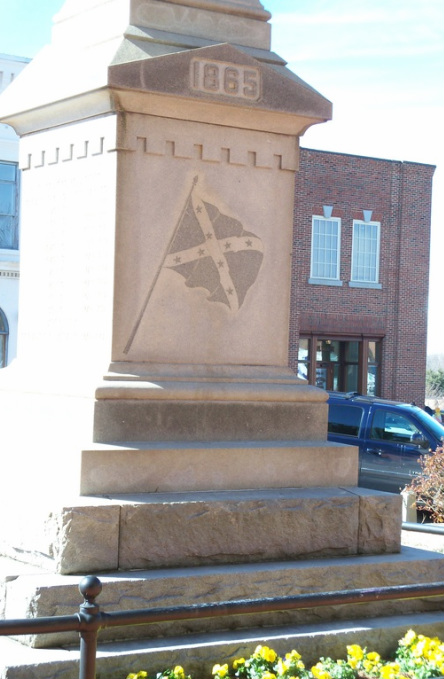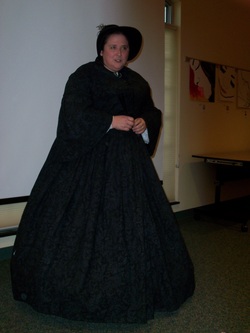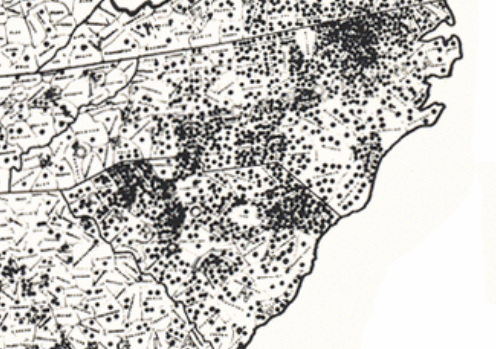In 1918 in Union County
Teachers of African Americans
Superintendent of Union County Schools called on teachers to organize war savings stamp sales in 1918 in February. A list of "colored school" teachers was published. Antioch was the only Rosenwald school which had been built that year.
Newfoundland – Matilda Alsobrooks
Red Level-Henry Presson
Thomasville-R.A. Hamilton
Union Springs-Cull Wiliams (sic)
Gordonville-L.A. Nixon
Caudle-D.W. Tomberlin
Pine Grove-J.C. Caudle
Nicey Grove-Rev. E.W. Massey
Flint Ridge-N.H. Redfearn
Marshville-J.E. Lytle
Avenue--Isaac E. Lytle;
Gulledge—Aaron Perry
Philadelphia—C.R. Chambers
Starnes Chambers Grove—Thomas Chambers
Cool Springs--Lizzie Watson,
Silver Run—J. Leonard Harrison
Clarksville—J.A. Williams
Starnes Chapel—M.C. Presson
Laney—J.T. Blount
Silver Mission—Albert
Antioch--Belle D. McCorkle
McCain--Sam Funderburk
Wilson—Henry Massey
McIlwain—Rev. S.L. Fulwood
Waxhaw—D.S. Massey
Craig—Rev. E.H. Hough
Davis—Henry Keno
Redding Springs—Baxter Deese
Marvin—C.C. Crawford
Rea—George Gaddy
Liberty Hill--R.B. Barrett
Mineral Spring—John R. Carter
Hudson—Mathew Winchester
Rock Hill--L.R. Russell
Jerusalem—W.J. Guin
Ridge Road—Harvey Reid
Olive Branch—Thomas S. Parker
(Nisbet, 1918)
Newfoundland – Matilda Alsobrooks
Red Level-Henry Presson
Thomasville-R.A. Hamilton
Union Springs-Cull Wiliams (sic)
Gordonville-L.A. Nixon
Caudle-D.W. Tomberlin
Pine Grove-J.C. Caudle
Nicey Grove-Rev. E.W. Massey
Flint Ridge-N.H. Redfearn
Marshville-J.E. Lytle
Avenue--Isaac E. Lytle;
Gulledge—Aaron Perry
Philadelphia—C.R. Chambers
Starnes Chambers Grove—Thomas Chambers
Cool Springs--Lizzie Watson,
Silver Run—J. Leonard Harrison
Clarksville—J.A. Williams
Starnes Chapel—M.C. Presson
Laney—J.T. Blount
Silver Mission—Albert
Antioch--Belle D. McCorkle
McCain--Sam Funderburk
Wilson—Henry Massey
McIlwain—Rev. S.L. Fulwood
Waxhaw—D.S. Massey
Craig—Rev. E.H. Hough
Davis—Henry Keno
Redding Springs—Baxter Deese
Marvin—C.C. Crawford
Rea—George Gaddy
Liberty Hill--R.B. Barrett
Mineral Spring—John R. Carter
Hudson—Mathew Winchester
Rock Hill--L.R. Russell
Jerusalem—W.J. Guin
Ridge Road—Harvey Reid
Olive Branch—Thomas S. Parker
(Nisbet, 1918)
Teachers and Unequal Pay
In the 1920’s, county records of enrollment show that African American students attending school numbered 2,950 for the 1919-20 term, 27 percent of the total; and 3,048 for the 1924-25 term, 25 percent of the total; and 2,603 for the 1929-30 term, 23 percent, according to a S. Glenn Hawfield, who wrote a "History of Education in Union County" for The Monroe Enquirer in 1957 (Hawfield, 1957). The African-American population as about 24 percent of the total Monroe population, Hawfield reported from census records. For the same account, Hawfield printed the total county expenditure for teachers in African-American schools. They were $12,767 in 1919-20; $21,113 in 1924-25; and $26,207 in 1929-30. In comparison to salaries for white teachers, salaries for African American teachers were 11 percent in 1919-20, nine percent in 1924-25, and nine percent in 1929-30 of the total salary expense. Census data for the county by race was not reported in comparison in the article; but Timothy Tyson writes about the census of Union in 1930.
According to Tyson, one fourth of the county population was African-American, population or 10,048 of a total of 40,979. Assuming that the percentage of African-American was similar a year earlier, African-American teachers were paid 10 cents for every dollar paid to white teachers. Such discrepancy in pay according to race and sex was declared unconstitutional by the Civil Rights Act in 1963 under President Lyndon B. Johnson. Some of the discrepancy may be attributed to the omission of salaries related to vocational education, which was at the heart of Washington’s vision for education of the African American for the period.
According to Tyson, one fourth of the county population was African-American, population or 10,048 of a total of 40,979. Assuming that the percentage of African-American was similar a year earlier, African-American teachers were paid 10 cents for every dollar paid to white teachers. Such discrepancy in pay according to race and sex was declared unconstitutional by the Civil Rights Act in 1963 under President Lyndon B. Johnson. Some of the discrepancy may be attributed to the omission of salaries related to vocational education, which was at the heart of Washington’s vision for education of the African American for the period.
Fewer in Union County
A map in the October 1988 edition of the North Carolina Historical Review shows the distribution of Rosenwald schools. In the center of the map, note fewer projects in Union County, compared with neighboring Mecklenburg and Anson counties. More people, higher incomes and leadership from Biddle University, now Johnson C. Smith University, that educated many of the teachers and an administrator of the Rosenwald fund, may explain some of the difference in participation. However, Anson County had more schools built than Union and was more comparable in income and population. Interest uncovering the history of the development of the schools also is sparser.
African American History Missing
Union County historian Virginia Bjorlin, interviewed by a University of North Carolina at Charlotte graduate students, discusses the need for more work uncovering history of the schools.
"And so I think that when you go to elementary and secondary education, you should learn a lot more than what’s in the book. You ought to learn to get along with people and to get along with all kinds of people and I think that’s been a very valuable lesson, but kind of a hard lesson for some adults to adjust to because it simply wasn’t that way when we grew up. Um, the blacks had their schools on the other side of town, and other than the people that lived right near us, um, I just simply didn’t know any black people. And so when I wrote my history book, I apologized for not putting much black history. I apologized in the preface, because I, I had a deadline on the History of Monroe book and I didn’t have time to go and talk to black people," (Smith, 2001).
"And so I think that when you go to elementary and secondary education, you should learn a lot more than what’s in the book. You ought to learn to get along with people and to get along with all kinds of people and I think that’s been a very valuable lesson, but kind of a hard lesson for some adults to adjust to because it simply wasn’t that way when we grew up. Um, the blacks had their schools on the other side of town, and other than the people that lived right near us, um, I just simply didn’t know any black people. And so when I wrote my history book, I apologized for not putting much black history. I apologized in the preface, because I, I had a deadline on the History of Monroe book and I didn’t have time to go and talk to black people," (Smith, 2001).

The Dixie flag on a memorial to Confederate soldiers in front of the Old Monroe Courhouse on Main Street symbolizes deep allegiance to the racism of the Civil War. In the spring of 2011, the Union County Historical Society denied a request to erect at this location a plaque in honor of Africa- American soldiers who fought in the war. (Photo by Autumn Smith).


